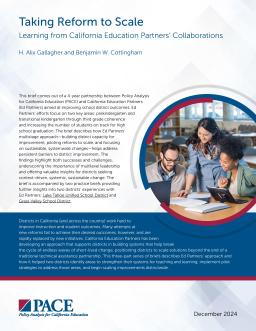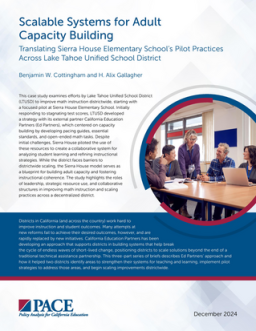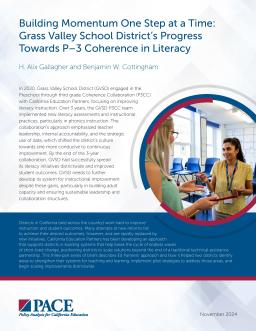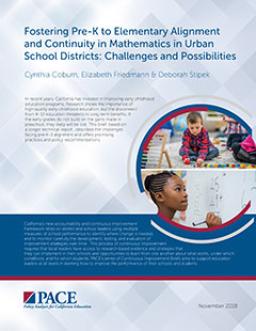Learning from California Education Partners’ Collaborations
Published
Summary
This brief introduces a three-part series describing California Education Partners’ multistage approach to supporting school districts with improving their students’ outcomes in literacy and mathematics. The approach addresses persistent barriers to improvement by building capacity in the district, piloting reforms, and focusing on scaling changes systemwide in sustainable ways. PACE authors highlight the successes and challenges of Ed Partners’ approach, emphasizing the fundamental importance of leadership at the teacher, school, and district levels to drive change throughout the district.
Translating Sierra House Elementary School’s Pilot Practices Across Lake Tahoe Unified School District
Published
Summary
This case study explores how Lake Tahoe Unified School District worked to improve math instruction, starting a pilot at Sierra House Elementary School. Partnering with California Education Partners, LTUSD addressed stagnant test scores by developing pacing guides, essential standards, and open-ended math tasks. Sierra House used these tools to create a collaborative system for analyzing student learning and refining instruction. While scaling districtwide remains a challenge, the Sierra House model highlights leadership and resource use with collaboration in advancing instructional coherence.
Grass Valley School District’s Progress Towards P–3 Coherence in Literacy
Published
Summary
Grass Valley School District (GVSD) partnered with California Education Partners through an initiative to improve literacy instruction. Over three years, GVSD implemented new literacy assessments and phonics practices, emphasizing teacher leadership, data use, and accountability. That shifted the district’s culture toward continuous improvement, enabling districtwide adoption of literacy initiatives and improved student outcomes. This case study highlights the need for stronger systems to build adult capacity and sustain leadership and collaboration.
Challenges and Possibilities
Published
Summary
In recent years, California has invested in improving early childhood education programs. Research shows the importance of high-quality early childhood education, but the disconnect from K–12 education threatens its long-term benefits. If the early grades do not build on the gains made in preschool, they likely will be lost. This brief, based on a longer technical report , describes the challenges facing pre-K–3 alignment and off ers promising practices and policy recommendations.



